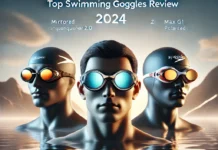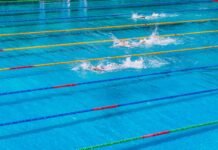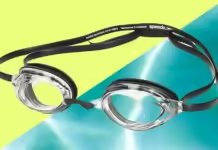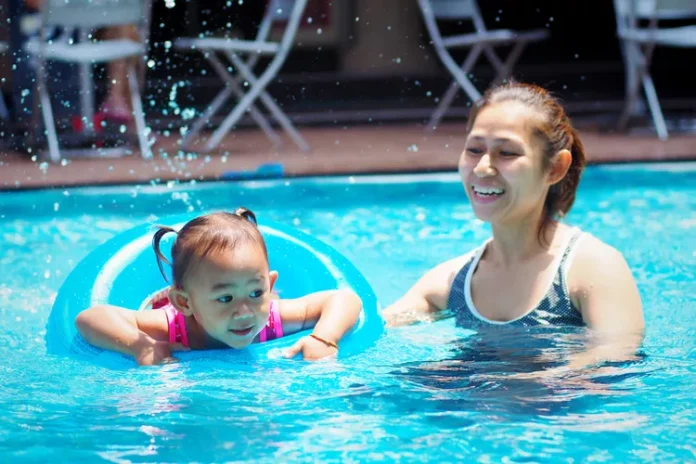Understanding the Importance of Swim Goggles
Swim goggles are an essential accessory for children who spend time in the water, whether in swimming pools or natural bodies of water. These goggles serve a dual purpose: protecting the eyes from irritants and enhancing underwater visibility. The importance of swim goggles cannot be overstated, especially when considering the various elements present in swimming environments that can cause discomfort or harm.
Firstly, swim goggles act as a barrier against chlorine, a common chemical found in swimming pools. Chlorine, while effective in maintaining water hygiene, can cause significant eye irritation, redness, and discomfort. Similarly, in natural bodies of water, salt, sand, and microorganisms can pose threats to eye health. By wearing swim goggles, children can avoid these irritants, ensuring a more comfortable and enjoyable swimming experience.
Moreover, swim goggles greatly enhance a child’s underwater visibility. Clear vision is crucial for both safety and enjoyment. With improved visibility, children can navigate the water more effectively, avoid obstacles, and feel more confident while swimming. This is particularly important for young swimmers who are still developing their swimming skills and need to see clearly to build their confidence.
However, the benefits of swim goggles can be compromised if they are worn-out or ill-fitting. Over time, the materials of swim goggles can degrade, leading to issues such as leaking and fogging. Worn-out goggles may not fit properly, which can result in water seeping in and causing eye irritation. Additionally, ill-fitting goggles can reduce underwater visibility, making swimming less enjoyable and potentially hazardous.
Therefore, it is crucial to regularly check the condition of your child’s swim goggles and replace them as needed. Ensuring that the goggles are in good condition and fit well will provide the necessary protection and visibility, allowing your child to enjoy a safe and pleasant swimming experience.
Signs That It’s Time to Replace Swim Goggles
Determining how often to replace your child’s swim goggles can be simplified by understanding the key indicators that suggest it’s time for a new pair. One of the most evident signs is visible wear and tear. If the lenses are cracked or scratched, it compromises the clarity and effectiveness of the goggles, making it difficult for your child to see underwater. Additionally, stretched or broken straps can make the goggles difficult to adjust and secure properly, leading to discomfort and potential leaks.
Another critical component to inspect is the seal of the goggles. Over time, the seal can deteriorate, losing its ability to provide a watertight fit. This issue not only affects the performance of the goggles but also can cause irritation or discomfort around the eyes. If you notice water entering the goggles frequently, despite adjustments, it is a strong indication that the seals are no longer effective.
Less obvious signs include persistent fogging and discomfort. While anti-fog treatments can temporarily address fogging, consistent issues may indicate that the lenses’ coating has worn out, necessitating a replacement. Similarly, if your child frequently complains about the goggles being uncomfortable or if they need constant adjustments to keep them in place, these are clear signs that the goggles no longer fit well or have lost their structural integrity.
Real-life examples highlight the importance of replacing swim goggles timely. For instance, a parent noticed their child constantly adjusting their goggles during swim lessons, which hindered their performance and focus. Upon inspection, they found that the straps were too loose and the lenses were scratched. Replacing the goggles not only improved the child’s comfort but also enhanced their swimming experience.
Experts in swim gear emphasize the importance of regular inspections. According to swim coach Jane Doe, “Regularly checking your child’s swim goggles for signs of wear and tear can prevent discomfort and ensure they perform their best in the water.” By recognizing these indicators, you can ensure that your child’s swim goggles provide optimal performance and comfort.
Factors Affecting the Lifespan of Swim Goggles
The durability and lifespan of swim goggles can be influenced by a variety of factors. Understanding these elements is crucial for parents who frequently ask, “how often should I replace my child’s swim goggles?” One of the primary factors is the frequency of use. Goggles that are used daily or several times a week will naturally wear out faster than those used only occasionally.
Another significant factor is exposure to chlorine and saltwater. Both chlorine, commonly found in swimming pools, and saltwater from oceans can be harsh on the materials of swim goggles. These substances can cause the goggles to deteriorate more quickly, impacting the elasticity of the straps and the clarity of the lenses. To mitigate this, it is advisable to rinse the goggles with fresh water after each use.
Storage conditions also play a vital role in determining how often you should replace your child’s swim goggles. Goggles left in direct sunlight or stored in damp environments are more prone to damage. They should be stored in a cool, dry place, preferably in a protective case to prevent exposure to harmful elements and physical damage.
The quality of the goggles themselves is another critical consideration. Higher-quality goggles, often made with durable materials and better construction, tend to last longer than their cheaper counterparts. Investing in well-made goggles can be more cost-effective in the long run, as they won’t need to be replaced as frequently.
To extend the lifespan of swim goggles, proper maintenance is key. This includes rinsing them after each use, storing them correctly, and avoiding rough handling. Additionally, choosing goggles with anti-scratch and UV protection features can further enhance their durability.
By paying attention to these factors, parents can make informed decisions and maximize the usability of their child’s swim goggles, ensuring that they remain in good condition for as long as possible.
Choosing the Right Replacement Goggles
When it becomes evident that your child’s swim goggles need replacement, selecting the right pair is critical to ensure both comfort and performance. The primary consideration should be the type of goggles that best suit your child’s swimming activities. Goggles are generally categorized into recreational, training, and competitive types. Recreational goggles are ideal for casual swimming and play. They are designed for comfort and ease of use. Training goggles, on the other hand, are built for durability and frequent use, making them suitable for swim practices. Competitive goggles are streamlined for minimal drag and maximum clarity, perfect for racing.
Important features to look for when choosing replacement goggles include UV protection, anti-fog coating, adjustable straps, and comfortable seals. UV protection is essential to shield your child’s eyes from harmful sun rays, especially during outdoor swimming. An anti-fog coating is beneficial in maintaining clear vision underwater, preventing the lenses from fogging up during prolonged use. Adjustable straps ensure a snug fit, accommodating growth and various head sizes. Comfortable seals, often made from silicone or rubber, should provide a leak-free experience without causing discomfort around the eyes.
Proper fitting of swim goggles is paramount to avoid water leakage and discomfort. To ensure a good fit, place the goggles over your child’s eyes and gently press to create a seal. The goggles should stay in place momentarily without the straps. Adjust the straps so they are snug but not too tight, ensuring the goggles sit comfortably around the eye socket without pressing too hard on the skin.
When it comes to brands, there are several reputable manufacturers known for their quality and reliability. Brands like Speedo, TYR, and Aqua Sphere are well-regarded in the swimming community. For those seeking budget-friendly options, brands such as Zoggs and Finis offer quality goggles at a more affordable price point. By considering these factors, parents can make an informed decision in selecting swim goggles that will provide optimal protection and comfort for their child.

















